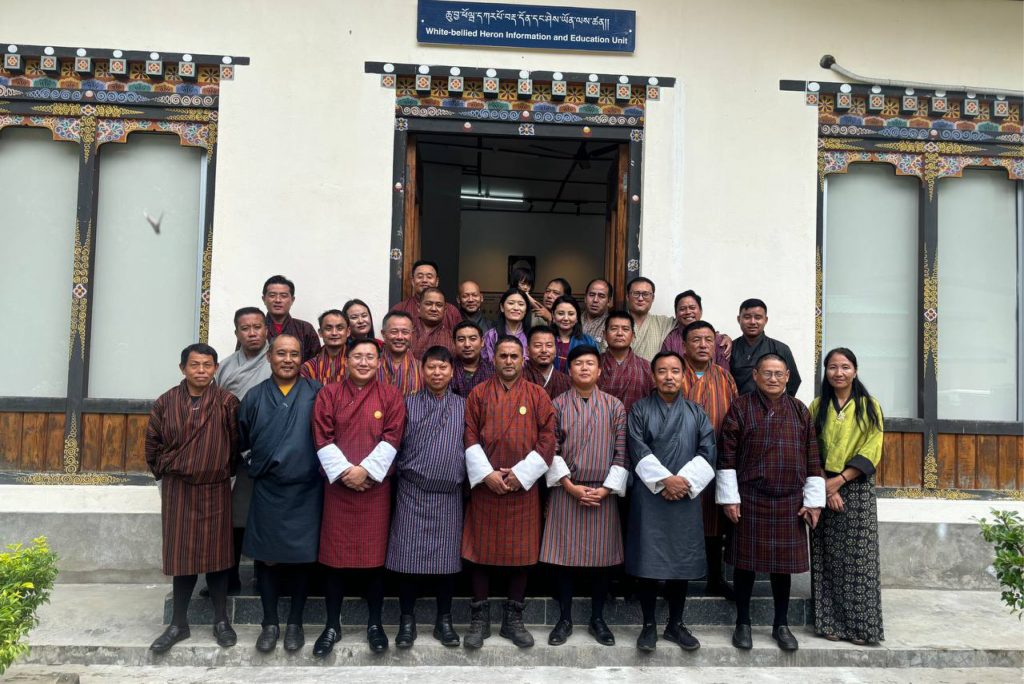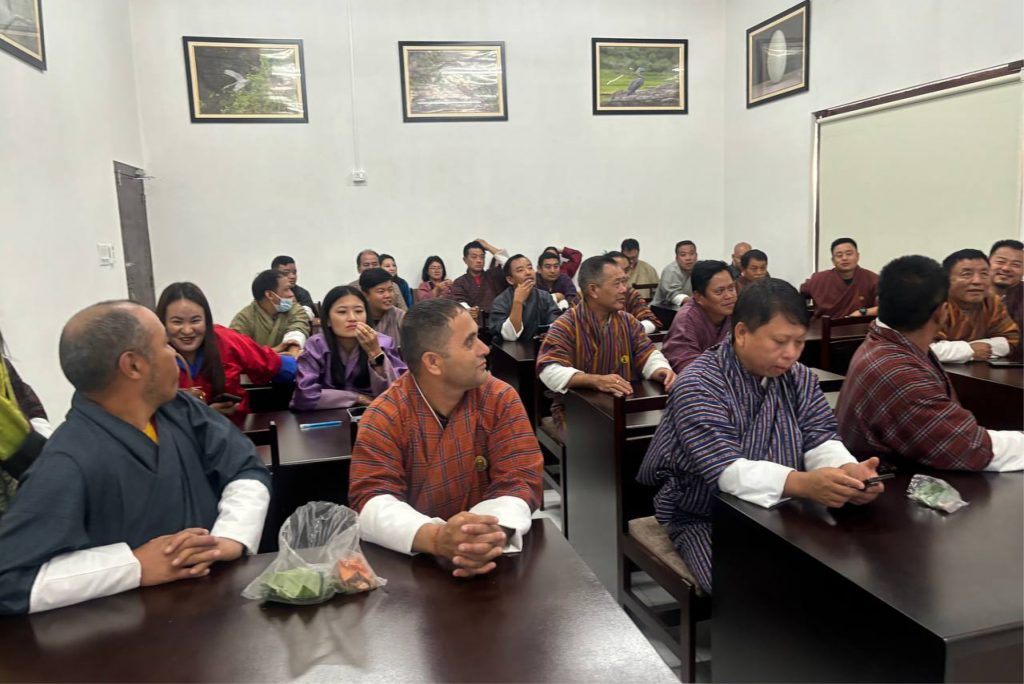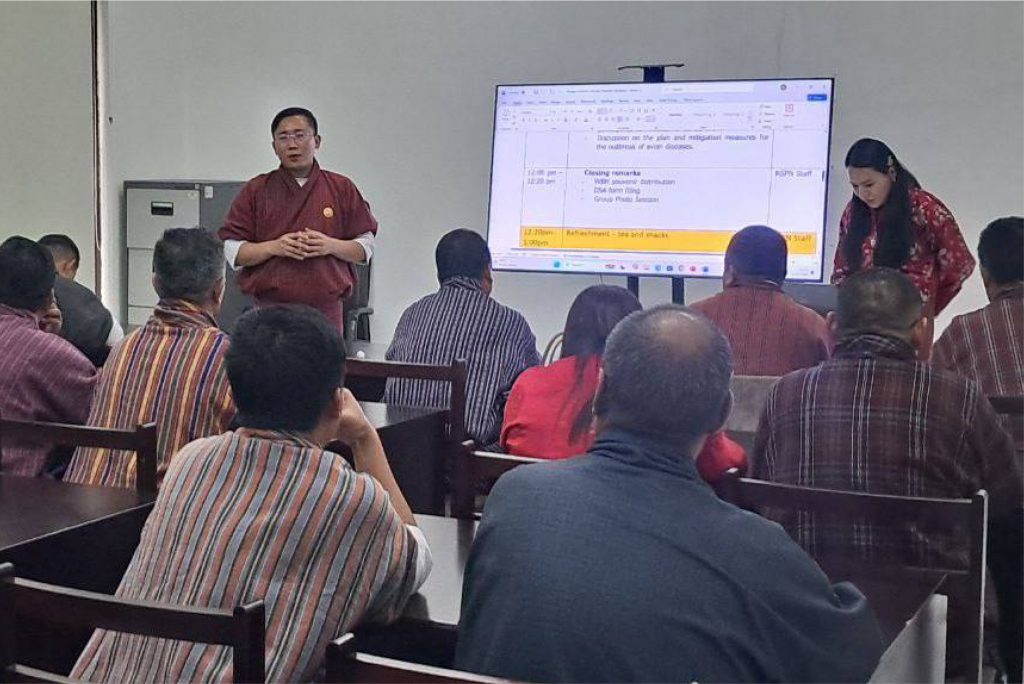The conservation of White- bellied Heron is a matter of urgent global concern. In order to advocate on the importance of conserving the WBH and to discuss the means to collaboratively enhance the conservation effort, RSPN staff of White-bellied Heron Conservation team organized an advocacy program to Dzongkhag livestock, agriculture and Tsirangtoe gewog staffs on 11th October 2024.The WBH -CC team member made a guided tour for the participants and presented on the ecology and some of the conservation approaches RSPN applies in reviving and sustaining the low population of WBH.
The program began with a presentation on RSPN roles and the White- bellied Heron ecology, the benefits of conserving WBH (ecological, socioeconomic), and means to mitigate the threats to WBH. Participants were divided into two groups, they were introduced to captive breeding facilities of WBH and explained about the standard protocol involved in breeding, rearing and feeding WBH. In between the session participants were encouraged strongly to raise questions and doubts, allowing them to voice their thoughts and curiosity about the WBH conservation.
Later a discussion on the preventive measures and response plans for potential outbreaks of avian diseases were also discussed with livestock officials. The advocacy program successfully met its objectives of raising awareness and fostering a sense of responsibility towards environmental conservation. Feedback from the participants indicated that the program was both educational and inspiring.
The participants saw mixed groups of people with presence of both the gender. In total there were 5 numbers of female participants and 28 numbers of male participants from the community.



Copyright © 2026 RSPN All Rights Reserved